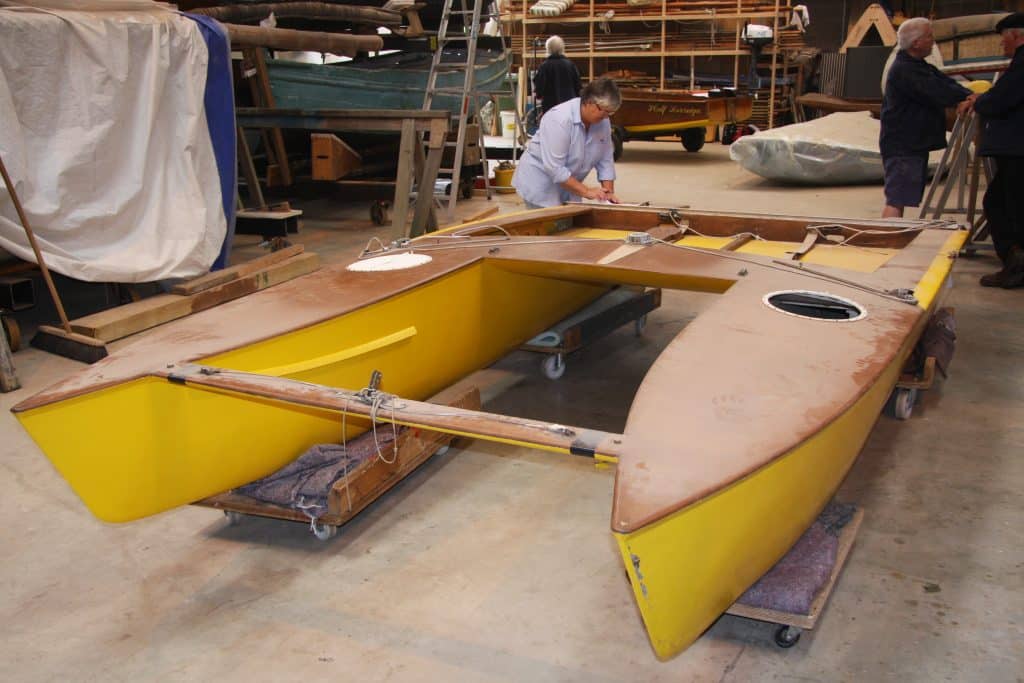 The firm, G. Prout and Sons, was formed by Geoffrey Prout and his sons, Roland and Francis, in 1935.
The firm, G. Prout and Sons, was formed by Geoffrey Prout and his sons, Roland and Francis, in 1935.
The company originally specialised in building canoes and folding dinghies as yacht tenders: after the Second World War they opened a small factory on Canvey Island, in Essex. The firm grew and hundreds of folding dinghies and canoes were sold worldwide.
In the late 1940s Roland and Francis started experimenting with two canoes lashed together to make their first catamaran. However at this time their main passion was for canoe racing (they were champions in kayaks) and were picked to represent Britain in the 1952 Olympics. Later they began to carry out more serious catamaran experiments, this time using racing kayaks tied together with a bamboo platform. To this they rigged a lugsail and the jib from an International 14 dinghy. The result was so successful the brothers decided to design and build a catamaran, Shearwater I, which won all the local races. In 1954 the boat was entered in a “D” class handicap in the Burnham-on-Crouch annual regatta week, and won outright.
The interest being generated in catamarans resulted in collaboration with other designers, which led to the Prouts producing the smaller and more easily trailed Shearwater III. Roland and Francis entered the No.I Shearwater III in the first Cross-Channel Dinghy Race from Folkestone to Boulogne in 1956, and beat all the best racing dinghy helmsmen of the day (which included Uffa Fox) by over one hour. The resulting publicity created by this win ensured the success of the Shearwater III.
The Shearwater III was the world’s first production catamaran, with sail numbers now over 2,000. The class received Royal Yachting Association recognition by 1959. Yellow Bird was raced by the Prout brothers and won national championships. The Shearwater is still a potent performer and capable of beating newer designs on handicap. This is a result of the Shearwater being a restricted class rather than a one design, allowing it to be developed and to benefit from new ideas.
Dimensions
Length 4.9m
Beam 2.3m
Depth 0.7m


